Truncus Arteriosus
Truncus arteriosus is a single outlet from the heart arising from both ventricles with only one semilunar valve, and giving rise to both systemic and pulmonary circulation.
Incidence: 0.03-0.21 per 1000 births, accounting for 1% of structural heart defects.
Sonographic findings:
Fig 1, Fig 2, Fig 3, Fig 4
- One great vessel with a single semilunar valve that overrides the VSD.
- A direct continuity between one or two pulmonary arteries and the single arterial trunk.
- Normal aortic root excluding this condition.
- Abnormal truncal valve due to an abnormal number of cusps, thickening, stenosis, or insufficiency.
- Color Doppler imaging can aid in the identification of pulmonary trunk, arising from the main trunk, as well as the assessment of the degree of truncal valve dysfunction.
- Thymic hypoplasia or aplasia may be noted during echocardiography in the case of conotruncal defects related to deletion of chromosome 22q11.2.
- Pitfalls:
- Tetralogy of Fallot with pulmonary atresia or pulmonary atresia with ventricular septal defect are often confused with truncus arteriosus.
- The absence of the pulmonary outflow tract and failure to image the pulmonary artery makes it difficult to differentiate truncus arteriosus from pulmonary atresia with VSD.
- Usually diagnosed after 16-18 weeks.
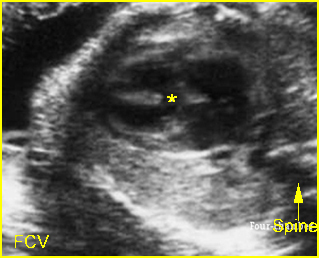
Fig 1: Ventricular septal defect (in case of truncus arteriosus) Four-chamber view: interventricular septal defect (*)
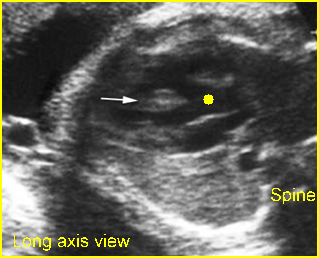
Fig 2: Overriding aorta (common trunk) (in case of truncus arteriosus) Long axis view: aortic root (solid circle) running from both ventricles (arrow = interventricular septum)
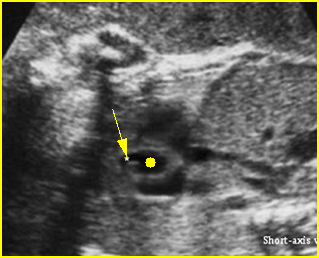
Fig 3: Pulmonary artery arising from aorta Short axis view: Pulmonary artery (arrow) arising from aorta (solid circle) in case of truncus arteriosus
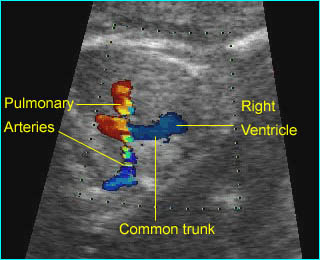
Fig 4: Truncus arteriosus: Both pulmonary arteries arising from the enlarged common trunk
Video clips of Truncus Arteriosus
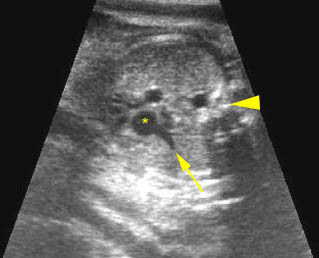
Truncus arteriosus : Common trunk (aortic root) overiding both ventricles; small pulmonary artery (arrow) originating from the common trunk (*), (arrowhead =spine)

Truncus arteriosus: Both pulmonary arteries arising from the enlarged common trunk
Associations: Other intracardiac malformations, especially VSD and interrupted aortic arch, and extracardiac malformation (20-40%), often associated with chromosome 22q11 deletion (12-35%).
Management: Careful prenatal and postnatal search for associated anomalies and karyotype (including FISH for chromosome 22q11 deletion) are indicated. Delivery should be performed where immediate pediatric cardiac consultation is available.
Prognosis: Poor in most cases but better in cases of appropriate surgical correction. Repair of truncus arteriosus in the neonatal period can be performed routinely with excellent survival, even in patients with major associated abnormalities.

